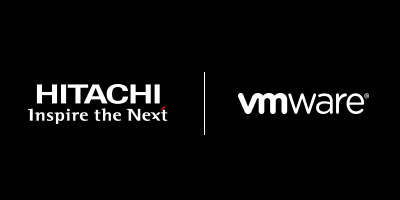While the cloud is not for every organization or every workload, the management and operational style of the cloud is something we should all be shooting for. In a previous blog I introduced some of the key use cases that are driving customers to embrace a hybrid cloud approach. Today, I want to discuss two main outcomes to strive for when embarking on such a transformation: 1. Achieving greater velocity in delivering application services; and 2. Achieving cloud-like operational efficiency via modernized infrastructure that results in as little disruption as possible.
The customers and technology executives I speak to regularly are focused on building an IT roadmap to ensure their organizations can deliver fast, agile, high quality and secure application services across multiple sites and providers. The top traits among them include global delivery of services, business continuity, cloud-smart flexibility and cost management.

For a lot of organizations, that’s accomplished through VMware hypervisor-hosted application services that continue to serve businesses well. The good news is there’s no good reason to transform most of those VMs into containers. The reality is that a combination of VMs, containers, and smattering of bare metal will probably be the norm across core and edge locations for years to come.
The key question becomes: How do you want to run all of that? What’s the most effective way to run the data center, cloud, edge and any hybrid workloads in a way that feels like a modern cloud? The answer for a lot of companies will be VMware’s technology stack, including Tanzu, that is reliably hosted and ideally automated with Hitachi Vantara cloud-ready compute and storage infrastructure.
Reaching for the Clouds
To get to a more cloud-like model, one first needs to understand how to operationalize cloud capabilities within the environment effectively. For example, it’s important to consider ways to unburden IT through self-service mechanisms that enable users and DevOps teams to consume IT services with greater self-sufficiency when provisioning resources to operate their application services.
At Hitachi Vantara, we’ve compiled some guidelines for approaching hybrid cloud to help get things moving in the right direction. We believe these insights can help transform on-premises virtualized environments into a cloud-like hybrid cloud delivery platform with ease.
1. Make a foundational start, then refine your roadmap
Start by reimagining how to manage applications and workloads with the most optimum resources. Then right-size those resources to maintain cost efficiencies and to meet new app resource demands effectively. The outcomes won’t come in one step, but such a hybrid cloud foundation will enable organizations to start rethinking the roadmap for IT services based on those experiences. Solutions like our Hitachi UCP RS, bring these things to life. It allows for self-service IT services across VM and containers; makes assessments on which application services are targets for migrating and seamlessly moves those with no interruption; meets developer needs for Kubernetes services for new/re-architected applications; and performs elastic operations and financial operations to right size across locations.
2. Set operational expectations for Hybrid Cloud
Hybrid cloud experiences run the gamut. For the sake of simplicity, one experience could be around the provisioning of a server to support a new application service. If using a hyperscaler cloud, a simple request via the provider’s API would see a couple of servers ready for use within minutes.
That’s the type of experience organizations should be seeking. Hitachi has a great deal of expertise bringing such experiences to on-premises environments running VMware vSphere. Our solutions make infrastructure more cloud-like in terms of how they operate, are used, and are financed.

Through our highly-integrated solutions we reduce the complexity of the hybrid cloud and bring greater operational efficiency within reach. Hitachi UCP software makes it possible to provision hardware resources to support application services and transform bare metal servers into VM and container delivering platforms with all the required virtual services provisioned and protected. Hitachi UCP RS leverages VMware Cloud Foundation stack to provide a compelling platform with workload domains to support VM and container workloads supporting enterprise application services. So when an application or database administrator needs to deploy new resources or adjust what is available to existing services, this integrated platform can provide a self-service catalog and/or ensure these services (compute, storage etc.) can be requested via policies in application YAML code. This automates all the essential steps without needing expert external support.
The net effect is to make existing applications and infrastructure management more cloud-like with automation while supporting new cloud-native application services with Tanzu add-on.
3. Manage and protect data with the cloud
Every application has its own set of SLAs for recoverability and business continuity. Hyperscalers make references to availability zones and s3 clouds for good reason. But it’s also important to ensure you have capabilities to generate copies of production data for testing, development, and analytics, as well. Data and infrastructure availability are key words in the Hitachi lexicon and they drive a lot of our internal thinking. Hitachi can help add cloud-level protection and recoverability to traditional data center applications hosted on local VMware virtualization environments and that can be the first steps into hybrid cloud.
Hitachi infrastructure software offers various business continuity and recoverability options. It automates data availability, protection, and recoverability locally and/or remotely. In addition to on-premises, we can automate data replication across data centers, colocation site and near-cloud or service provider environments. Hitachi will ensure that data is synchronized active-active or active-passive across sites and can be backed up and duplicated to preferred cloud hyperscalers to meet backup SLA requirements. We rigorously test these capabilities with our technology partners, whether its VMware Site Recovery Manager or your preferred backup vendor, to ensure customers have the experiences we expect.
4. Make data accessible to cloud services, but maintain control
When it comes to working with data, Hitachi Cloud Connect enables organizations to extend data center operations to third-party operators like Equinix while remaining securely within your on-premise security boundaries. On-premise data hosted or virtualized by VSP storage can easily be replicated to Cloud Connect to allow it to be accessed by cloud provider services for analytics and other data processing needs.

Using Hitachi Cloud Connect, your organization can have the best of both worlds: governance control over the data, the performance, management, and predictive controls of VSP combined with the near-cloud, high-speed networking communication to hyperscalers that Equinix provides. Hitachi Cloud Connect makes it possible for organizations to have in the cloud the security, reliability, and scalability of the same Hitachi VSP storage arrays trusted in data centers. The same management, monitoring, and predictive analytic capabilities extend across your on-prem and near-cloud resources, creating a seamless, high-performance environment that can support any data-driven requirement.
5. Ensure you have flexibility to run apps on other clouds
Earlier I referenced that some of your cloud assessments will identify applications that will want to have infrastructure capabilities to migrate or burst into other clouds. Some refer to this “bursting” as application spanning. The nirvana is to do this without requiring a whole new set of operational processes irrespective of where an application is running. I think you will find that this is required for today’s hybrid VM and container-based application services.
On that point, Hitachi UCP RS utilizes VMware Cloud Foundation, which helps organizations extend or migrate workloads to VMware clouds in hyperscaler environments. VMware customers prefer VMware Cloud because it essentially looks like another vCenter-managed VMware infrastructure that they can link and be consumed like any other datacenter vSphere cluster. A single management portal provides that uniform view and control over resources, regardless of where the infrastructure runs. For migration use case, it saves them from the struggle of rebuilding their existing VMs using the specific custom images of each hyperscaler and avoiding different operational processes.
On containers, by enabling Kubernetes with vSphere with VMware Tanzu, VMware has radically simplified the delivery of Kubernetes clusters on multiple clouds, including hyperscalers, and the development of cloud-native applications. It’s the same Kubernetes distribution across these environments. Hence, developers and DevOps get the freedom to run a particular set of pods in your hybrid cloud-managed infrastructure and operations teams become experts in one set of operational processes.
6. Observability matters
One of the pressing concerns organizations have as they adopt the cloud alongside their on-premises and near-cloud infrastructure is the concurrent increase in complexity. Maximizing the benefits of a hybrid cloud is contingent on understanding what’s going on across their entire environment.
Observability presents a single, unified perspective of the whole environment, from the data center to the farthest edges of the cloud and is the starting point for keeping everything in alignment. This includes alerts that bring issues to your attention and provide actionable recommendations.
By integrating Hitachi metrics and combining them with VMware metrics into a series of vRealize dashboards as part of Hitachi UCP deployment, Hitachi provides a unified view of the entire environment to help quickly identify the specific source of any issues and opportunities for further optimization. The goal is to help organizations manage performance efficiently across all infrastructure.
Making the old new again
It should be noted that it is possible to carry forward existing storage infrastructure into this new hybrid cloud delivery model. Whether it’s Hitachi or non-Hitachi storage infrastructure, using Hitachi UCP, organizations can leverage those assets virtualized behind UCP or VSP without any disruption to any existing application services. This eliminates the need to have to wait for specific storage systems to reach the end of maintenance agreements. They can be part of the hybrid cloud environment today with UCP.
Hybrid cloud can be complicated. But it can be more complicated if early infrastructure decisions are approached in a piecemeal way. It can become difficult, if not impossible, to get the maximum benefit from the cloud if the organization is forever dealing with integration challenges or massive duplication of applications services and data to serve both cloud and on-premises workloads. By working together in the areas mentioned above, Hitachi and VMware are eliminating the most-pressing hybrid cloud hurdles to let organizations focus on innovation and opportunity.
Paul Morrissey is Director of Product Management, Modern App Infrastructure & Hybrid Cloud, Hitachi Vantara.
Related


























































































